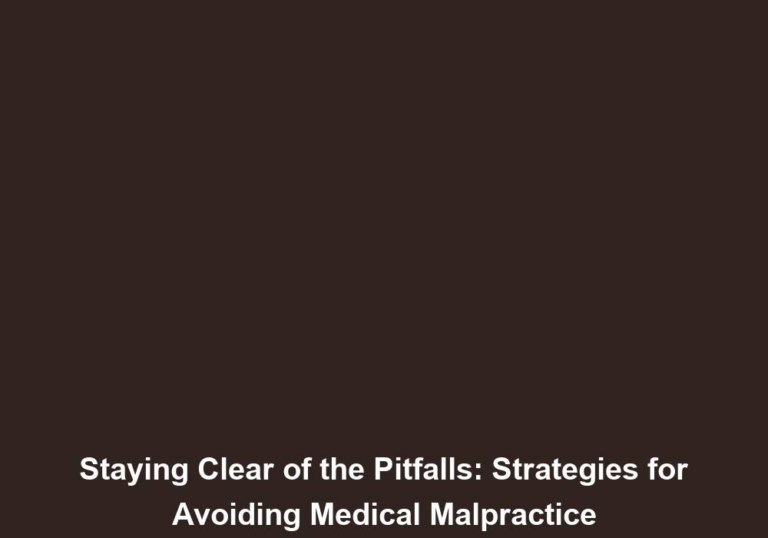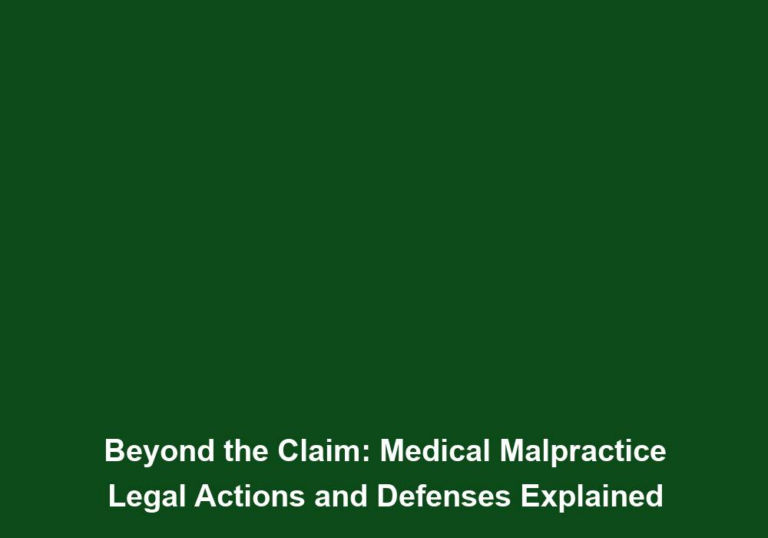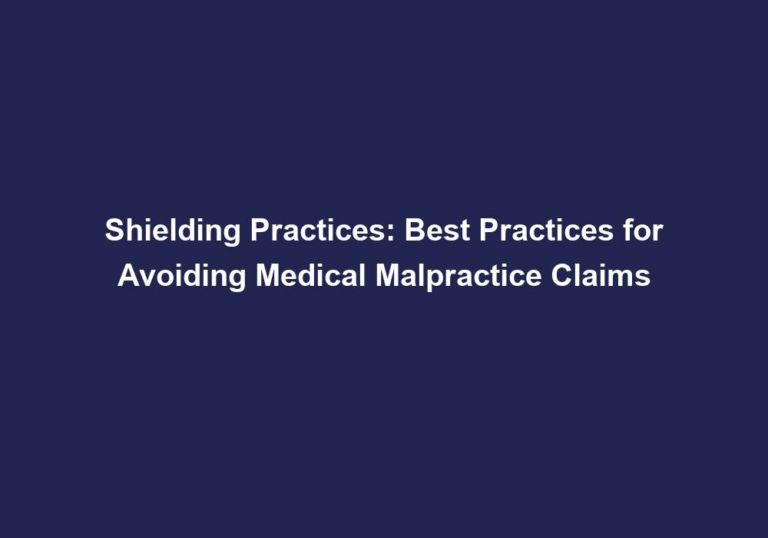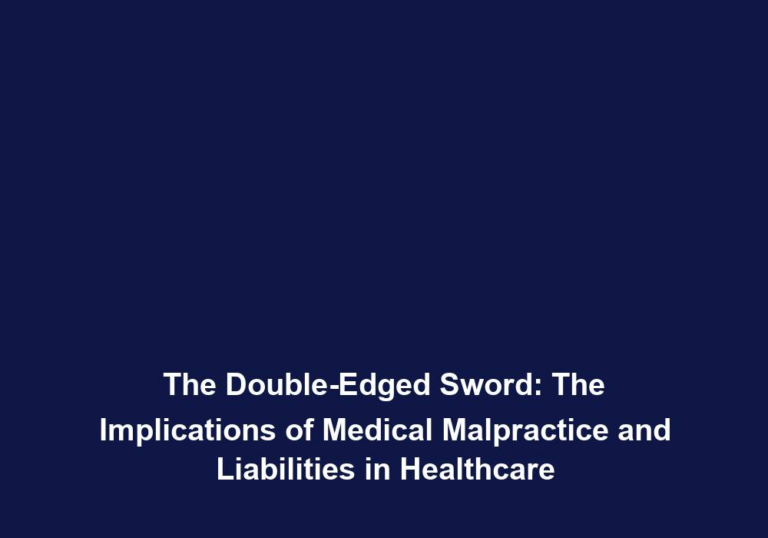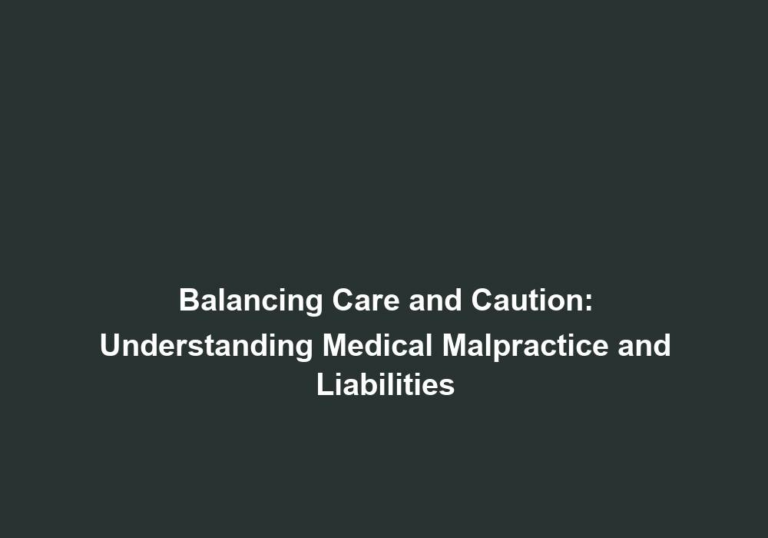Safety First: Proactive Approaches to Preventing Malpractice
In any professional field, ensuring safety and preventing malpractice should be of utmost importance. Whether you are a healthcare professional, lawyer, engineer, or any other professional, taking proactive measures to prevent malpractice can protect both your clients and your reputation. This article will explore some effective strategies and approaches to prioritize safety and minimize the risk of malpractice.
Understanding Malpractice
Before we delve into preventive measures, let’s first understand what malpractice entails. Malpractice refers to any professional misconduct or negligence that leads to harm, injury, or loss to a client or patient. It can occur in various industries, including healthcare, law, finance, construction, and more. Malpractice can result from errors in judgment, inadequate training, lack of attention to detail, or failure to adhere to professional standards.
The Importance of Proactive Approaches
Taking a proactive approach to prevent malpractice is crucial for several reasons. First and foremost, it helps protect clients or patients from harm and ensures their well-being. Additionally, proactive measures safeguard the professional’s reputation and credibility, enhancing trust among clients, colleagues, and the wider community. By prioritizing safety, professionals can also avoid legal consequences, financial liabilities, and damage to their careers.
Developing a Safety Culture
To prevent malpractice, professionals should cultivate a safety culture within their organizations or practice. This involves fostering an environment where safety is prioritized, encouraged, and integrated into every aspect of the professional’s work. By developing a safety culture, professionals can create a foundation for preventing malpractice and promoting the well-being of their clients and patients. Here are some key steps to develop a safety culture:
1. Clear Communication and Documentation
Effective communication is essential in preventing malpractice. Professionals should clearly communicate with their clients, colleagues, and team members to ensure everyone is on the same page. This includes providing clear instructions, explaining agreements, and documenting any changes made during the process. By maintaining clear communication and documentation, professionals can reduce the likelihood of misunderstandings or disputes. This documentation also serves as valuable evidence in case of any legal issues.
2. Continuous Education and Training
Staying updated with the latest industry standards, regulations, and best practices is crucial for professionals. Continuous education and training help enhance skills, knowledge, and awareness, reducing the chances of errors or negligence. Professionals should actively seek opportunities to participate in workshops, conferences, and online courses that provide valuable insights and keep them at the forefront of their respective fields. By investing in continuous education and training, professionals can continuously improve their practices and stay informed about any changes or updates in their industry.
3. Implementing Standard Operating Procedures (SOPs)
Developing and implementing Standard Operating Procedures (SOPs) is a vital step in preventing malpractice. SOPs outline step-by-step guidelines, protocols, and processes to ensure consistency and minimize errors. By following standardized procedures, professionals can create a framework for safe and reliable practices. It is important to regularly review and update SOPs to reflect any changes in regulations or industry standards. This ensures that professionals are always operating in accordance with the best practices and are well-prepared to prevent malpractice.
4. Comprehensive Risk Assessments
Conducting regular risk assessments is essential to identify potential hazards, vulnerabilities, or areas where malpractice may occur. By understanding potential risks, professionals can take proactive measures to mitigate them and prevent harm. Risk assessments should encompass various aspects, including equipment, procedures, client interactions, and overall workplace safety. By regularly assessing risks, professionals can identify potential issues and implement preventive measures to ensure the safety of their clients and patients.
5. Encouraging Reporting and Feedback
Creating an environment where employees feel comfortable reporting incidents, near-misses, or potential risks is crucial for preventing malpractice. It is important to encourage open communication and provide anonymous reporting channels to ensure that concerns are addressed promptly and effectively. Regularly reviewing and acting upon feedback helps identify areas of improvement and implement necessary changes. By fostering a culture of reporting and feedback, professionals can proactively identify and address any potential issues before they escalate into malpractice situations.
6. Monitoring and Evaluation
Regular monitoring and evaluation of processes, outcomes, and overall performance are vital in preventing malpractice. By implementing systems to track and analyze data, professionals can identify trends and assess the effectiveness of implemented safety measures. This allows professionals to make necessary adjustments based on the findings to ensure continued improvement and adherence to safety protocols. By continuously monitoring and evaluating their practices, professionals can proactively identify any areas that may be prone to malpractice and take appropriate corrective actions.
Conclusion
Prioritizing safety and taking proactive approaches to prevent malpractice is essential for professionals in all fields. By developing a safety culture, communicating effectively, investing in continuous education and training, implementing SOPs, conducting regular risk assessments, encouraging reporting and feedback, and monitoring and evaluating performance, professionals can significantly reduce the risk of malpractice. Remember, prevention is always better than cure, and by ensuring safety first, professionals can protect their clients, reputation, and careers.


